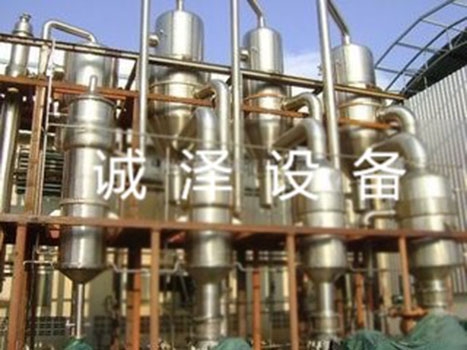NEWS
HEBEICHENGZEHUAGONGSHEBEICO.,LTD
Application of Multi-effect wastewater evaporation in wastewater treatment
Multi-effect wastewater evaporation is mainly used to treat wastewater with high concentration, high color and high salt content. At the same time, the by-products formed in the wastewater treatment process are collected. Low steam consumption, low evaporation temperature, large concentration ratio, more rational, more environmentally friendly and more efficient. Below, the editor will tell you about the advantages of multi-effect evaporation equipment in wastewater treatment!

The first category is divided according to the chemical properties of the main pollutants in the wastewater. The inorganic wastewater is mainly containing inorganic pollutants, and the organic wastewater is mainly organic pollutants. For example, wastewater from electroplating and mineral processing is inorganic wastewater; wastewater from food or petroleum processing is organic wastewater.
The second category is divided according to the products and objects of the enterprise, such as smelting wastewater, papermaking wastewater, coking gas wastewater, aluminum alloy pickling wastewater, chemical pesticide wastewater, textile printing and dyeing wastewater, dye wastewater, leather manufacturing wastewater, pesticide wastewater, Power plant wastewater, etc.
The third category is divided according to the main components of pollutants in wastewater, such as acid wastewater, alkaline wastewater, cyanide-containing wastewater, chromium-containing wastewater, cadmium-containing wastewater, mercury-containing wastewater, phenol-containing wastewater, aldehyde-containing wastewater, oil-containing wastewater, Sulfur-containing wastewater, organic phosphorus-containing wastewater and radioactive wastewater, etc.
The first two classifications do not touch on the main components of pollutants in wastewater, nor can they reflect the hazard of wastewater. The third type of classification clearly proposes that wastewater is mainly composed of pollutants, which can reflect the corresponding hazard of wastewater.
Multi-effect evaporation is an early seawater desalination process, and now it has developed into a relatively mature and stable wastewater evaporation process, which solves the problem of serious fouling, and is gradually applied to the treatment of high brine content.
Multi-effect evaporation mainly has the following process advantages:
The heat transfer link of Multi-effect wastewater evaporation is boiling and condensation heat transfer, and it is the phase transition heat transfer on both sides, so the thermal conductivity is very high. For the same temperature range, multi-effect evaporation uses less heat transfer area than multi-stage flash evaporation.
The power loss of Multi-effect wastewater evaporation is low. Since the formation of fresh water by multi-stage flash evaporation relies on the sensible heat of salt water adsorption, and the latent heat is much higher than the sensible heat, the same amount of fresh water is produced, and the circulation amount required by multi-stage flash evaporation is much larger than that of multi-effect evaporation, so Multi-stage flashing requires more power loss.
The control flexibility of Multi-effect wastewater evaporation is large, and the load range is from 110% to 40%, which can be controlled normally without reducing the water generation ratio.
The above are the advantages of Multi-effect wastewater evaporation in wastewater treatment shared with you!
CONTACT US
E-mail: sales@hbhgsb.cn
Tel: +86-311-83756555 / 83951911
Wechat: 18031837273
Fax: +86-311-85837070
Copyright 2020 Hebei Chengze Chemical Equipment Co., Ltd 冀ICP备18023413号-1 Powered by www.300.cn






